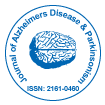Nuestro grupo organiza más de 3000 Series de conferencias Eventos cada año en EE. UU., Europa y América. Asia con el apoyo de 1.000 sociedades científicas más y publica más de 700 Acceso abierto Revistas que contienen más de 50.000 personalidades eminentes, científicos de renombre como miembros del consejo editorial.
Revistas de acceso abierto que ganan más lectores y citas
700 revistas y 15 000 000 de lectores Cada revista obtiene más de 25 000 lectores
Indexado en
- Índice Copérnico
- Google Académico
- sherpa romeo
- Abrir puerta J
- Revista GenámicaBuscar
- Claves Académicas
- TOC de revistas
- Infraestructura Nacional del Conocimiento de China (CNKI)
- Biblioteca de revistas electrónicas
- Búsqueda de referencia
- Universidad Hamdard
- EBSCO AZ
- OCLC-WorldCat
- Catálogo en línea SWB
- Biblioteca Virtual de Biología (vifabio)
- publones
- Fundación de Ginebra para la educación y la investigación médicas
- Pub Europeo
- ICMJE
Enlaces útiles
Revistas de acceso abierto
Comparte esta página
Abstracto
Cognitive Dysfunction after Surgery: An Emergent Problem
Canistro Gennaro, Levantesi Laura, Oggiano Marco, Sicuranza Rossella, Congedo Elisabetta and De Cosmo Germano*
Postoperative cognitive dysfunction (POCD) results as a large problem that causes a reduction in the quality of life and increases morbidity and mortality especially in elderly patients. The increased age of patients undergoing surgery has made evident the problem and several studies evaluated pathogenesis and implemented a targeted therapy. This review analyses POCD, delirium and mild cognitive impairment (MCI) definition, risk factors and physiopathology with an analysis on anaesthesia technique influence. Unlike the postoperative delirium, POCD is more difficult to diagnose because of several tests that must be administered in the pre and postoperative period, even at a distance of time. Furthermore adequate depth of anaesthesia, monitored with Bispectral Index (BIS) or Electroencephalography (EEG), reduces the cognitive dysfunction incidence. Currently the pathogenesis is not well understood although neuro inflammation plays a central role while the importance of anaesthesia techniques has not established.
Revistas por tema
- Agricultura y acuicultura
- Alimentación y Nutrición
- Bioinformática y biología de sistemas
- Bioquímica
- Ciencia de los Materiales
- Ciencia general
- Ciencias Ambientales
- Ciencias Clínicas
- Ciencias farmacéuticas
- Ciencias Médicas
- Ciencias Sociales y Políticas
- Ciencias Veterinarias
- Enfermería y atención sanitaria
- Física
- Genética y biología molecular
- Geología y Ciencias de la Tierra
- Ingeniería
- Inmunología y Microbiología
- Química
Revistas clínicas y médicas
- Anestesiología
- Biología Molecular
- Cardiología
- Cirugía
- Cuidado de la salud
- Dermatología
- Diabetes y Endocrinología
- Enfermedades infecciosas
- Enfermería
- Gastroenterología
- Genética
- Inmunología
- Investigación clínica
- Medicamento
- Microbiología
- Neurología
- Odontología
- Oftalmología
- Oncología
- Pediatría
- Toxicología

 English
English  Chinese
Chinese  Russian
Russian  German
German  French
French  Japanese
Japanese  Portuguese
Portuguese  Hindi
Hindi